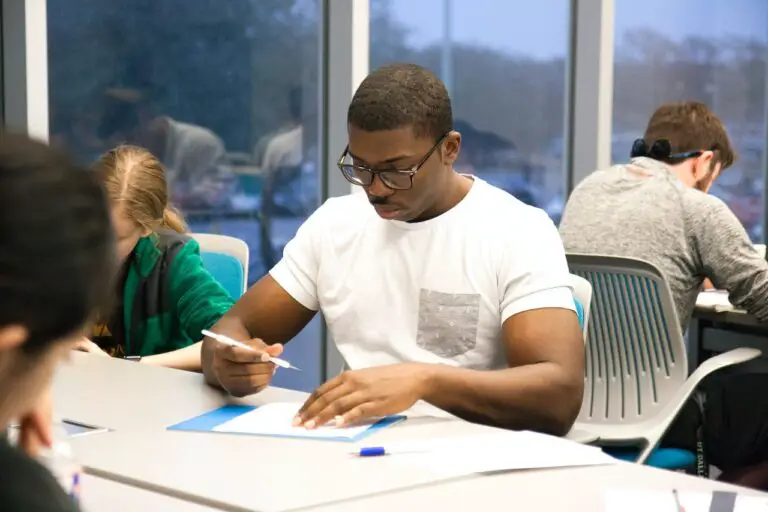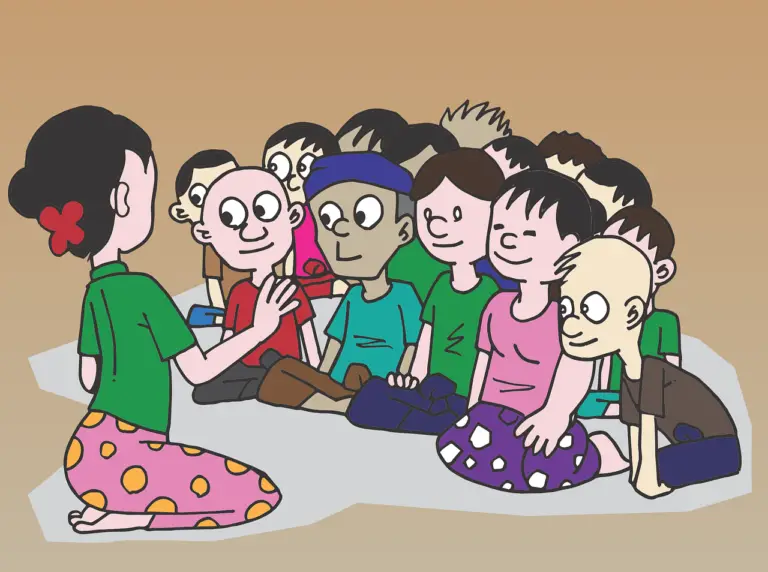When I go to class, my backpack is full of stuff. EFL/ESL classes are so diverse and changeable that I like to keep my options open, and this requires having the tools and supplies to react to whatever the students need.
Some items listed here never leave my backpack. I might not use them in every class, but I have them to call upon when needed. Others, I use every day.
Here is my list of 9 things every EFL/ESL teacher needs for brilliant classes.
- Tablet/Phone
- Deck of Cards
- Pencil Case
- Tissues
- Dice
- A4 dry erase pockets
- Paper (scrap and clean)
- Water
- Soft ball(s)
With all these items, you’re sure to have an answer for almost anything your class can throw at you. Below, you can learn exactly how important and flexible they are.
But they won’t solve all your problems. Sometimes, your students just won’t want to take part, and that’s a common experience for a lot of teachers. Find out how to deal with that kind of issue by reading my article: What to Do if Private EFL/ESL Students Won’t Participate
All the images in this post are photos of the items I take to every private class. For more on how to become a private EFL/ESL tutor, check out my big guide How to Get Started as an EFL/ESL Private Tutor.
1. Tablet/phone
Modern technology is wonderful. Using the devices we already own, we can open up possibilities for our learners, which would otherwise be impossible.

I bring my iPad to every lesson. Without it, I would waste so much time with unnecessary sheets of paper, and I’d struggle to organise my classes. Here are some things I use it for:
- Holding my lesson plan notes
- Taking photos of elicited and organically acquired vocabulary (see my Best Method to Improve EFL/ESL Students’ Vocabulary: 9 Steps to learn what this means)
- Recording short films created by my students
- Using the Anki app for vocab memorisation
- Showing slideshows and images to group classes
- Videos and listenings on YouTube
- Playing background music during chilled activities
- Setting timers and countdowns
These are just the things I do regularly, let alone the other apps I use for specific one-off classes.
I could do all this on my phone, however I prefer the larger screen of the iPad as everyone in a small group class can see it easily.
My phone is equally vital, though. I use it for contacting parents, receiving lesson payments, and providing a backup if my tablet won’t work.
Despite all this, I’m wary not to overuse technology. It’s important to prevent it becoming the centre of attention, as there’s so many possibilities for distraction. Students already have too many screens in their lives.
Instead, I make a conscious effort to only use it as a tool when needed. If I can do something just as easily and in the same time using an “analogue” method, I always avoid the digital devices.
2. Deck of cards
Playing cards are small, lightweight, cheap and provide countless possibilities.
The main use is obvious. Playing games. Go Fish, Cheat, and Higher or Lower are three of my favourite, but there are plenty of other card games which you can adapt for EFL/ESL. All you need is a deck of 52. I hardly notice it in my backpack, yet I’ve got hours of use from this old battered deck I bought 18 months ago for about 1 euro.
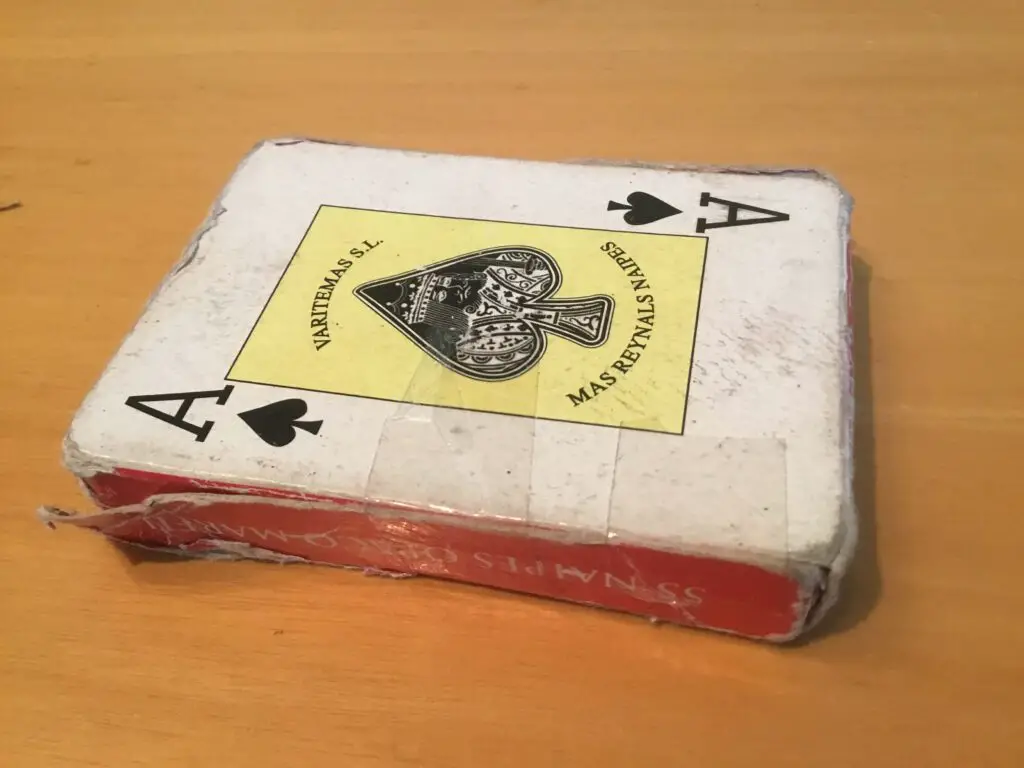
But there are more things you can do with a pack of cards than just play games. Here are some:
- Student Selector – assign them each a suit or a value and draw at random
- Tokens/Points – if you’re doing an activity or playing a game which awards points, give your students a card to represent the point (doesn’t matter what the value is, 1 card = 1 point)
- Magic Tricks – A great lesson plan can be teaching your students how to do a simple magic trick
- Counting/Number practice – Take out the picture cards and you’ve got cards from 1-10 which you can use to create random numbers. For example, draw three cards: 3, 7 and 9 – challenge students to say “379”
3. Pencil case
An absolute must for any teacher, no matter what the subject.
And not just for you, but for your students when they might need to borrow something. Don’t rely on everyone bringing the appropriate materials – there’s always one that doesn’t. In fact, in most of my private classes, I don’t expect them to bring anything. I supply it all myself.
Here’s what I have in my pencil case:
- 5 ordinary pencils
- 1 pencil sharpener
- 1 rubber/eraser
- 1 pair of scissors
- 1 gluestick
- 3 ballpoint pens
- A set of fine-tip coloured markers
- Sticky tape

Do I use all these things in every class? No. But I often find myself digging into the case, either to support an activity, write a quick reminder note, or stick together the rapidly deteriorating box for my pack of cards.
4. Tissues
You’d be surprised how often you’ll need to wipe things up, especially working with children. Drinks get spilled, tables get drawn on, glue gets all over the place – not every classroom has paper towels or tissues to hand.
On numerous occasions, I’ve saved some precious pieces of paper from the flood of an overturned glass of water by quickly whipping out a pack of tissues and stemming the tide.
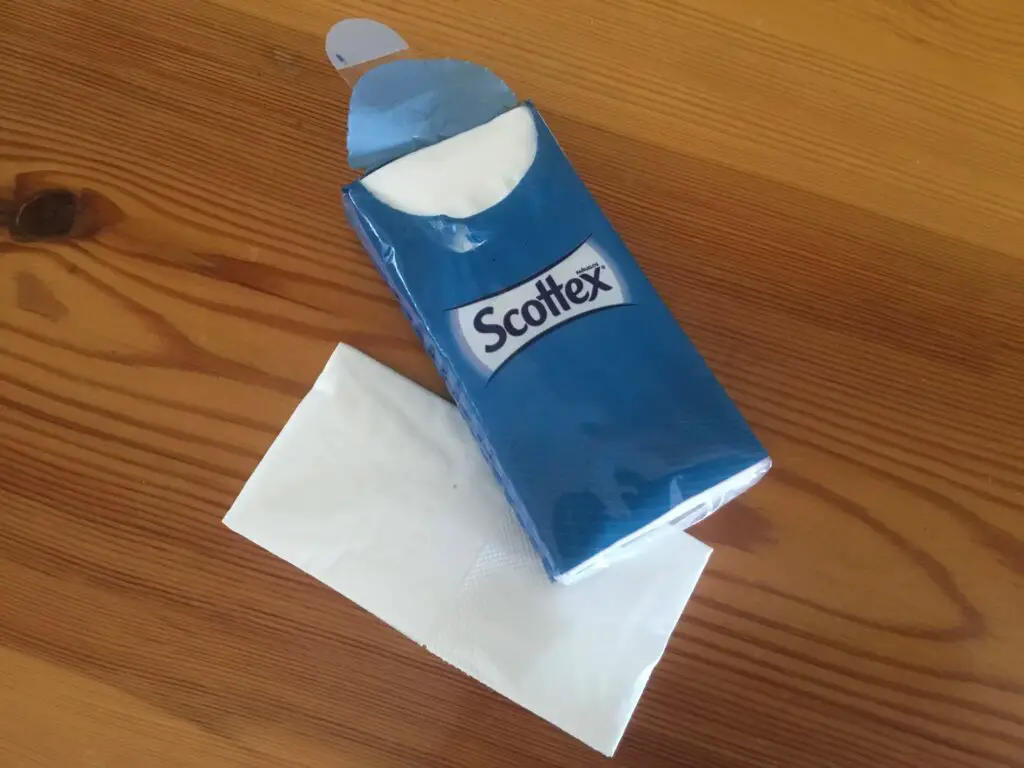
And while it’s gross, if you’re working with really young kids, well… let’s just say they don’t have full control of what substances come out of their face, and being able to throw a bunch of tissues at the problem saves a lot of sticky regret.
It’s also worth carrying around a small bottle of hand gel. I try to wash my hands between every class, and there isn’t always a bathroom with good soap available.
5. Dice
Similar to the pack of cards above, dice have a variety of uses and hardly weigh anything. They’re cheap and kids love them.
Especially all the funky dice you get in a role-playing set – they’re the source of multiple games, and can also be good random number generators. Need to pick someone from a class of 8? Roll the 8-sided dice!
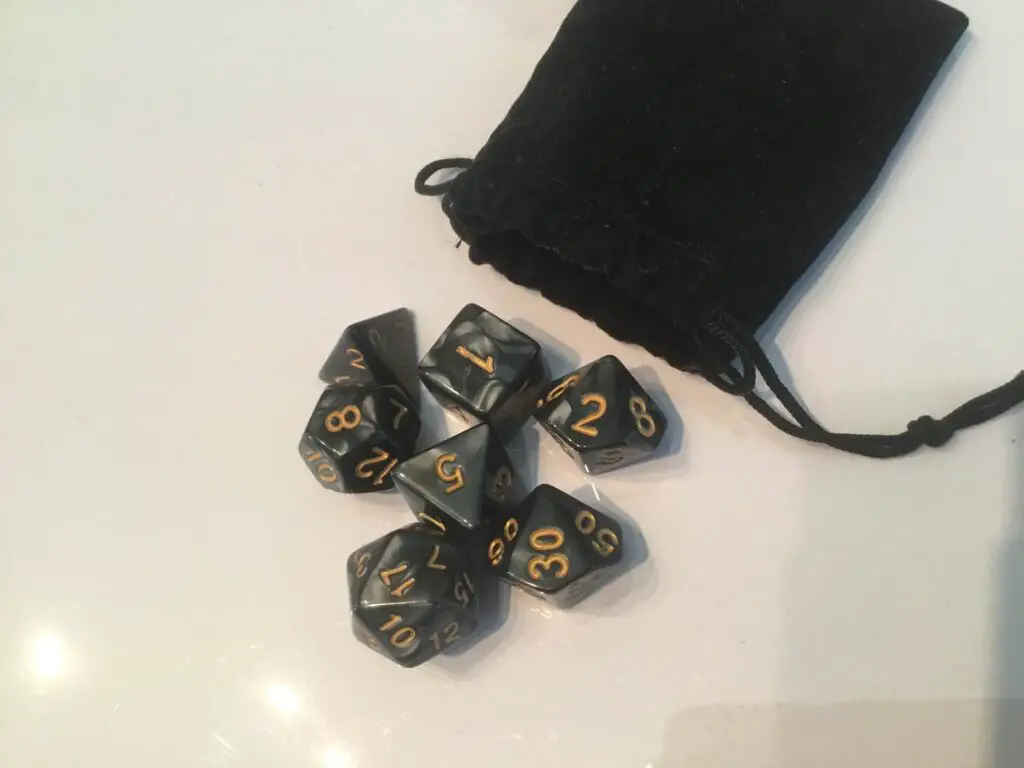
Even if you only opt for the standard 6-sided dice, you can find hundreds of uses for them. And they’re so tiny you won’t notice them in your bag.
I use dice on a daily basis with role-playing games – the single best activity for private classes.
6. A4 dry erase pockets
This list isn’t in any particular order, but if I ranked it on how useful they were, A4 dry erase pockets would come number one. No question.
An A4 dry erase pocket is a clear plastic sheath which you can write on with dry erase markers. Inside the sheath, you can insert A4-sized paper.
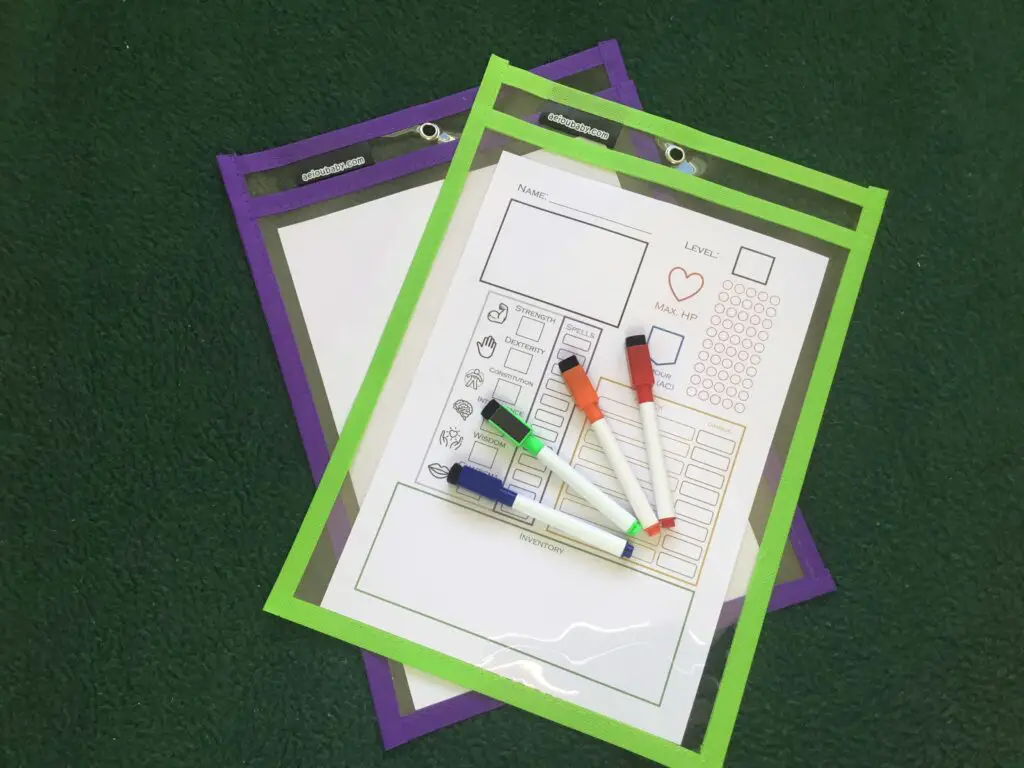
Why are they so great? Well, for a start, if you insert a blank piece of paper, you instantly have a lightweight, portable mini-whiteboard.
Then the real magic comes into play when you insert an activity sheet. Students can write on the sheet with a dry erase marker, then wipe it all off for another student to repeat. Saves on wasteful printing.
Because they’re so small, you can carry around several. I often put a dozen in my backpack and they weigh as much as an average textbook. Your students can have one each.
I use them in every single lesson, saving paper and printing costs, and allowing for varied activities, such as:
- Writing down vocabulary (acquired using my Best Method to Improve EFL/ESL Students’ Vocabulary: 9 Steps)
- Quick drawings to explain ideas
- Rough draft writings
- Rapid grammar practice
- Picture exploration activities (see my Speaking Games & Activities Perfect for Beginners)
- Scripts for short films
- Scoreboards
- Games such as Say Anything, Countdown and Call My Bluff (check out my Games and Activities for Advanced Learners)
The dry erase pockets often come with marker pens with erasers on the caps. For around $15, you can pick up a full set and be ready to go.
7. Paper (scrap and clean)
Despite the usefulness of the A4 dry erase pockets above, there are some occasions when you need good, old-fashioned paper.
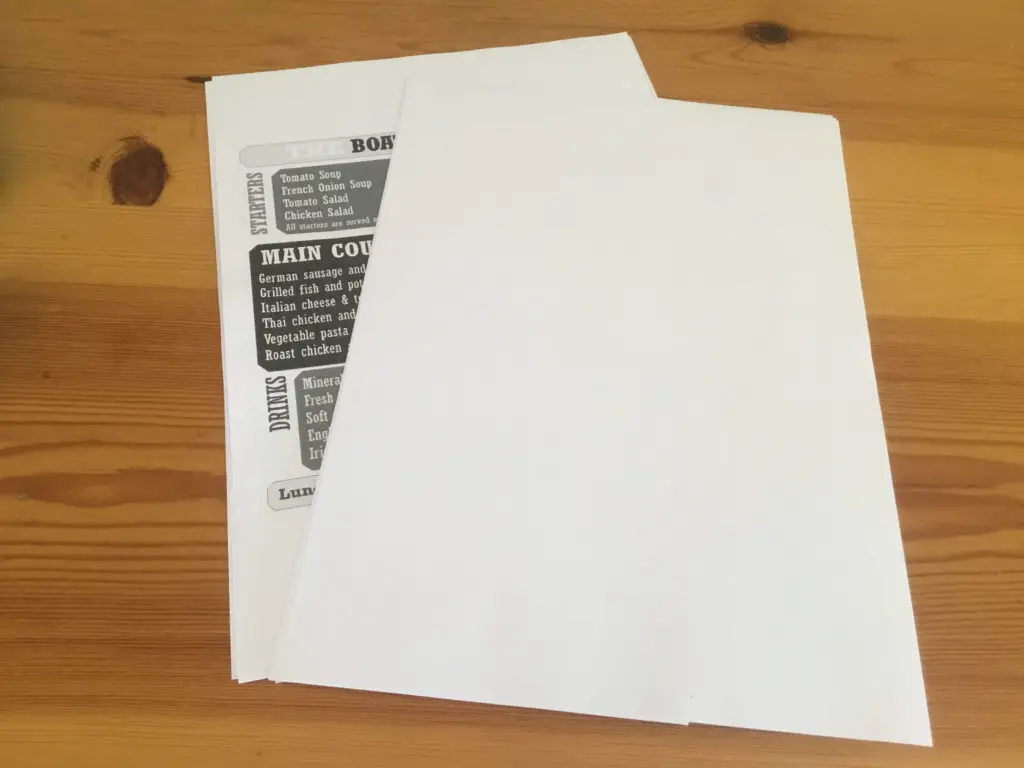
Arts and crafts activities, games involving folded scraps of paper in a hat, writing which you want to keep long term… it’s hardly breaking news that paper is useful.
But I don’t carry around too much. 10-15 sheets of clean, blank paper, and a similar amount of scrap paper is enough. It’s rare to need much more than that.
8. Water
If you’re working several consecutive hours, hydration is crucial. It may seem obvious, but I’ve seen teachers neglect this part of their daily routine with the result that, by the end of the day, they feel exhausted and suffer from serious headaches.
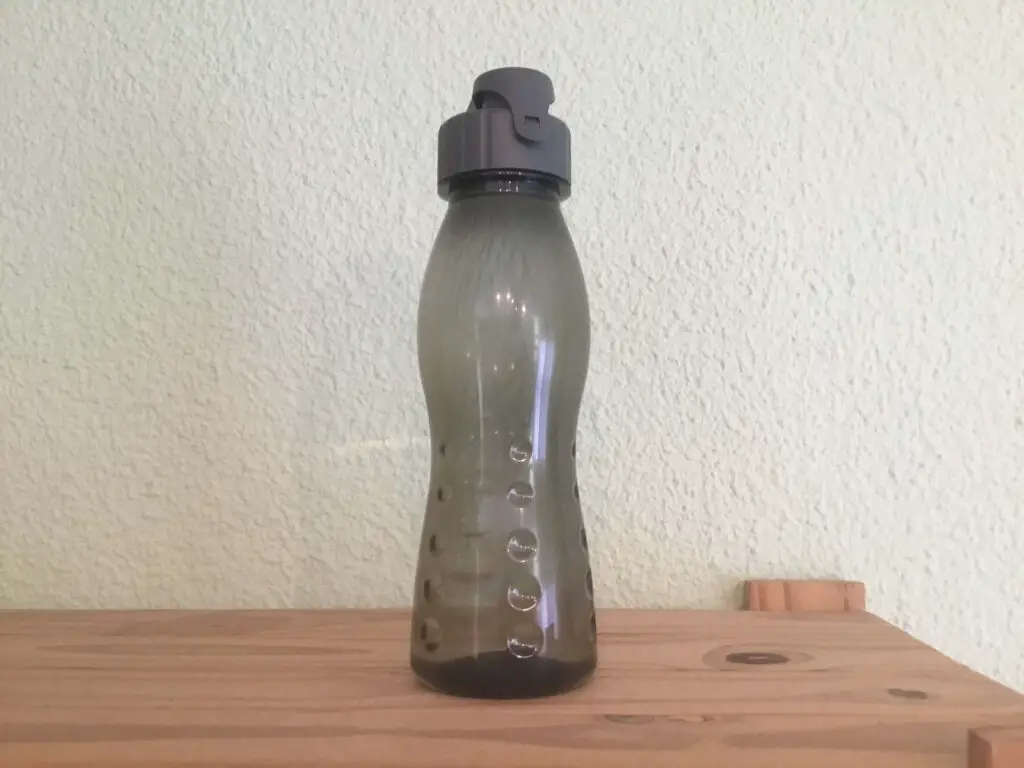
Teaching is especially thirsty work. If you’re speaking a lot and focusing on your students throughout, you’d be amazed how much water your body uses.
I aim to drink a litre every 2-3 hours. If I don’t get this much water, I notice it in my mood and energy levels. Of course, we all have different bodies, so find out how much water you need to stay on the ball. Talking of which…
9. Soft ball(s)
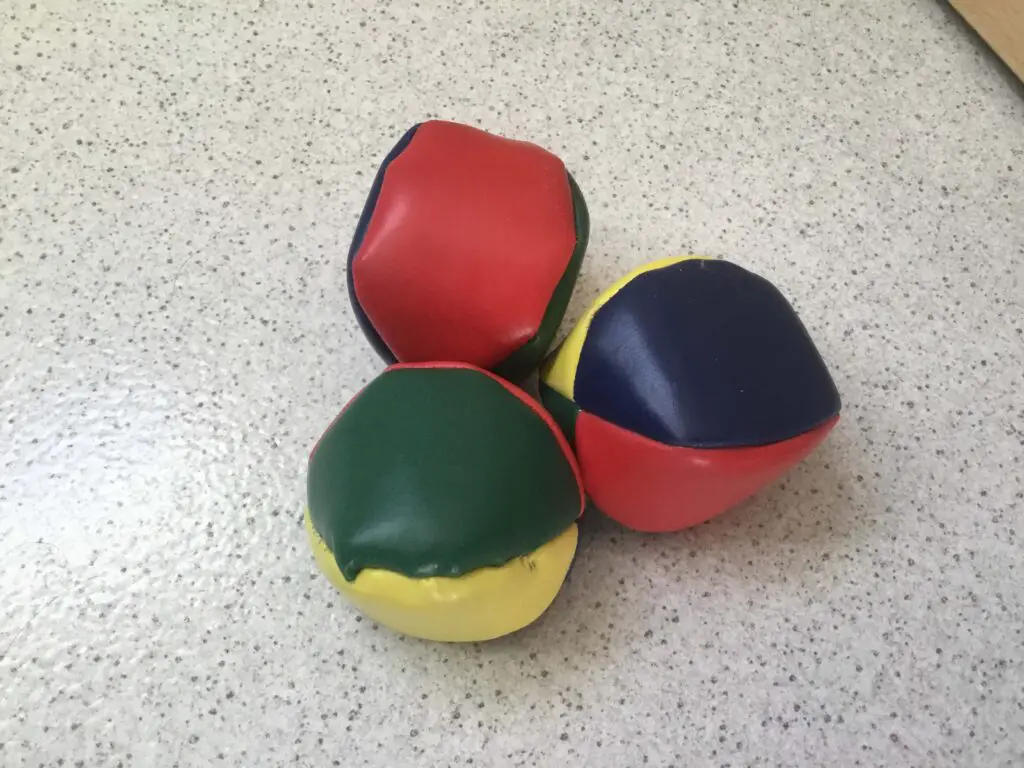
If a pack of cards and a set of dice were the first 2 in the series of “small items with endless uses”, soft balls complete the trilogy.
One of the first techniques I learned as a newbie TEFL teacher was passing the ball around to show whose turn it is to speak. Simple, but effective.
Since then, I’ve used soft balls (I prefer juggling balls) in many ways. Here are some:
- Active preposition practice (put the ball between the box and the pencil case)
- Hot Potato/Pass the Bomb
- Direct a blindfolded person to find the ball
- Alphabet races passing the letter and the ball
Bonus: Bags and backpacks
This may be obvious, but with all this stuff, you’ll need something to carry it all around – a backpack, or a heavy duty bag.
I opt for backpacks because they distribute the weight better throughout my body and offer plenty of storage space. As this is my day-to-day job, I prioritise comfort and durability at the expense of style.

I only ask myself this when buying a backpack: “Will it hold everything I need and last for years without falling apart?”
It’s worth investing in a proper backpack if you’re taking this job seriously. The expense is worth it in the long run.
Get your gear together
If you get everything on this list, you’ll be well on your way to successful English classes. Everything I’ve listed is small, lightweight and adaptable to your needs, while fitting comfortably in a backpack with room to spare for things like textbooks, arts and crafts materials, and everything else you need for each specific class.
Some other things which could be useful, but aren’t essential are:
- USB flashdrive
- Multi-part file/expanding file organiser
- Board pens & eraser for full-sized whiteboards
- Paperclips
- Stapler
- Emergency snacks
- Stickers/Stamps
Thanks for reading this article. If you’re looking for ideas on how to use some of these items, check out my EFL/ESL games for beginners, intermediates and advanced learners.
Catch up on all the articles in the Getting Started as a Private EFL/ESL Tutor guide:
How to Get Started as an EFL/ESL Private Tutor: Full guide
Requirements and Qualifications to Become an EFL/ESL Tutor
How to Get Private EFL/ESL Classes: Quickly find students
How Long Should Private EFL/ESL Classes Be: Tips included
How Much Should You Charge for Private EFL/ESL Classes?
Where Should In-Person Private EFL/ESL Classes Take Place?
Make Sure You Get Paid for Private EFL/ESL Classes
9 Items Every EFL/ESL Teacher Needs for Brilliant Classes



